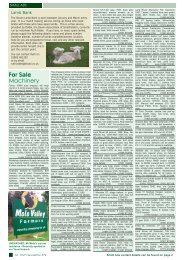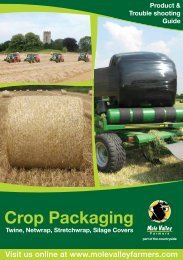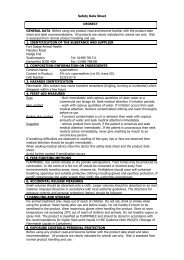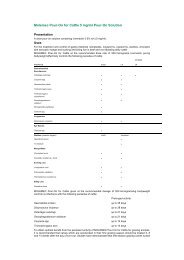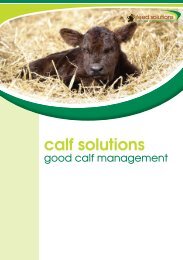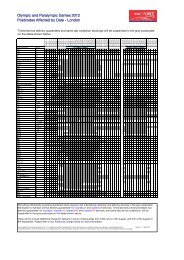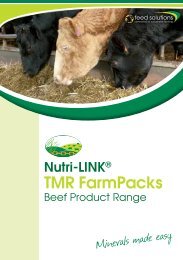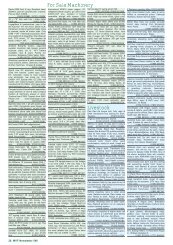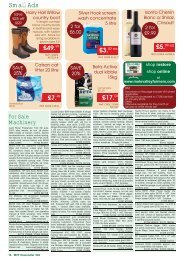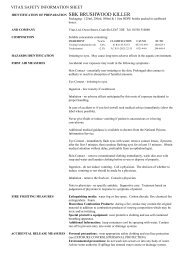MoleValley Calf - Mole Valley Farmers
MoleValley Calf - Mole Valley Farmers
MoleValley Calf - Mole Valley Farmers
You also want an ePaper? Increase the reach of your titles
YUMPU automatically turns print PDFs into web optimized ePapers that Google loves.
Dry feed management<br />
Background<br />
Numerous studies have examined the nutrition of the calf. Nutrient requirements<br />
have been established and models created to help design the ‘ideal’ calf starter<br />
feed. Recent initiatives have included work to investigate the impact of the<br />
nutrition of the calf on the long term production of milk and lean meat in the<br />
adult animal.<br />
Product Selection<br />
Essential requirements and key features of a specialist dry calf feed are<br />
summarised as follows:<br />
Requirement Feature<br />
Stimulate dry matter intake Appropriate ingredients<br />
Promote rumen development Ingredients releasing ideal rumen acids<br />
High rate of tissue protein gain Ideal amino acid profi le<br />
Good immune function Ideal vitamin and trace element supply<br />
Minimise digestive upsets Balanced energy sources<br />
Good bloom Essential fatty acids<br />
Specific additives<br />
Potential specifi c feed additives must be evaluated based on sound research. A<br />
cost effective, consistent response must be demonstrated.<br />
Physical form<br />
Compound feeds in 3mm pellet form are the most common calf concentrates.<br />
However, new specialist products in 6mm nut form, which are designed for<br />
feeding to calves and growing cattle beyond twelve weeks, are increasing in<br />
popularity. They provide a very simple, cost effective ‘single feed’ system.<br />
Coarse mixtures have historically been popular. They are very visually appealing<br />
and provide similar nutrients to compound feeds. Care must be taken to avoid<br />
dust and a high proportion of mealy materials which can lead to respiratory<br />
problems. Latest data suggests that from an economic perspective it is better to<br />
feed a compound feed than a coarse mixture.<br />
Application<br />
Specialist dry calf feeds should be offered from day one up to 12 weeks of age.<br />
Fresh feed must be provided each day. Calves must be eating at least 1kg for 3<br />
consecutive days before weaning. When intakes exceed 3.5kg per head per day<br />
calves should be changed to the appropriate heifer of beef feed.<br />
For further information or to place your order,<br />
contact your feed specialist or the farm sales<br />
co-ordinator at your local branch.<br />
FeedLine 01278 444829<br />
2012 CALF MANAGEMENT GUIDE | MOLE VALLEY FARMERS<br />
Top tips for dry feeding<br />
Offer feed higher than fl oor level<br />
Keep dry food fresh<br />
<strong>Calf</strong> nutrition<br />
Ensure dry feed is available ad-lib<br />
Wean when eating at least 1kg per day for<br />
three consecutive days<br />
Typical intake is 150kg per calf up to 12 weeks<br />
Clean water must be available at all times<br />
Pellet feeders<br />
Small pellet feeder - 40 litres<br />
A maintenance free feeder which keeps the<br />
feed fresh and reduces bird contamination.<br />
It has a robust construction for a long and<br />
maintenance free life with built in hooks<br />
and a self locking hatch.<br />
Large pellet feeder - 80 litres<br />
Also available, length 1350mm, height<br />
650mm, depth 300mm from MVF branches<br />
11




